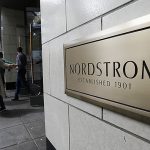Import cargo volume at the nations major retail container ports is expected to rise 13% this month compared with the same month a year ago, and double-digit increases are expected to continue through the summer as the U.S. economy begins in improve, according to the monthly Global Port Tracker report released today by the National Retail Federation and Hackett Associates.
These numbers show that retailers continue to anticipate improvements in the U.S. economy, NRF VP for supply chain and customs policy Jonathan Gold said. This is very different from the past two years when merchants were continually cutting their imports in an effort to manage inventory.
U.S. ports handled 1.08 million Twenty-foot Equivalent Units (TEU) in January, the latest month for which actual numbers are available. That was down just under 1% from December as imports wound down after the holiday season, but up 2% from January 2009. It was also the second month in a row to show a year-over-year improvement after December broke a 28-month streak of year-over-year monthly declines. One TEU is one 20-foot cargo container or its equivalent.
February was estimated at 1.08 million TEU, the same as January but a 29% increase over unusually low numbers in February 2009, and March is forecast at 1.09 million TEU, up 13% from the previous year. April is forecast at 1.17 million TEU, up 19% as retailers begin to stock up for spring and summer, May at 1.21 million TEU, up 17%, June at 1.26 million TEU, up 25%, and July at 1.33 million TEU, up 20%.
The first half of 2010 is expected to total 6.9 million TEU, up 17% from last years 5.9 million TEU. Imports for 2009 totaled 12.7 million TEU, down 17% from 2008s 15.2 million TEU and the lowest since the 12.5 million TEU reported in 2003. First-half growth is down from the 25% increase forecast a month ago, but reflects statistical issues at West Coast ports rather than a change in retailers import intentions.
Hackett Associates founder Ben Hackett said the U.S. economy appears to be in true recovery rather than the mid-point upswing of a double-dip recession.
We are in a cautious but sustained growth cycle, Hackett said. Trade will grow and as a result of statistical comparison with the trough in 2009, the growth rates will appear to be healthy.










